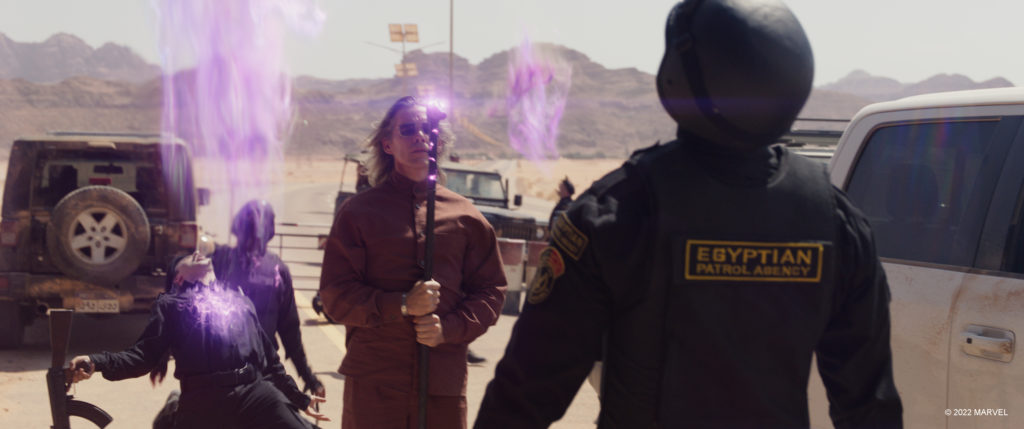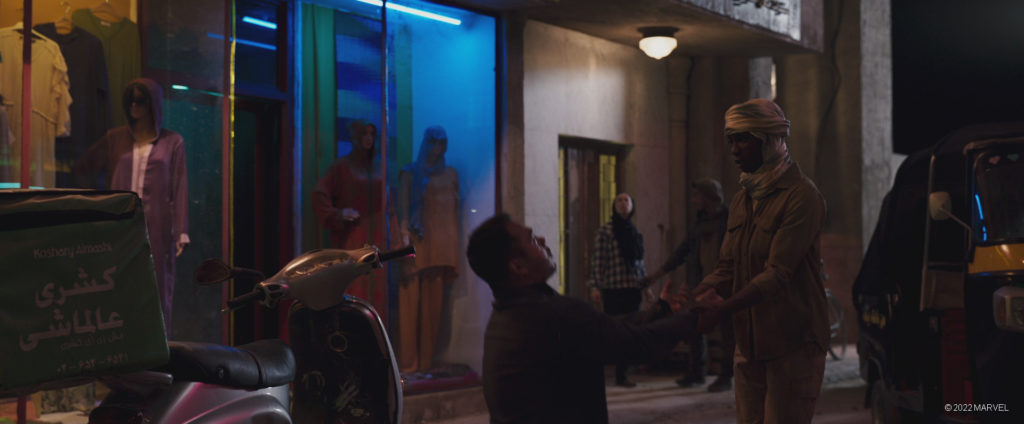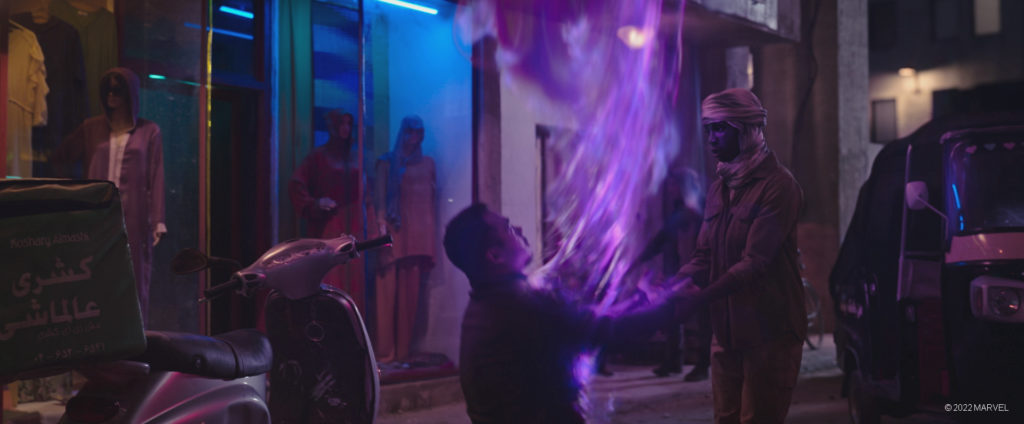Moon Knight Case Study
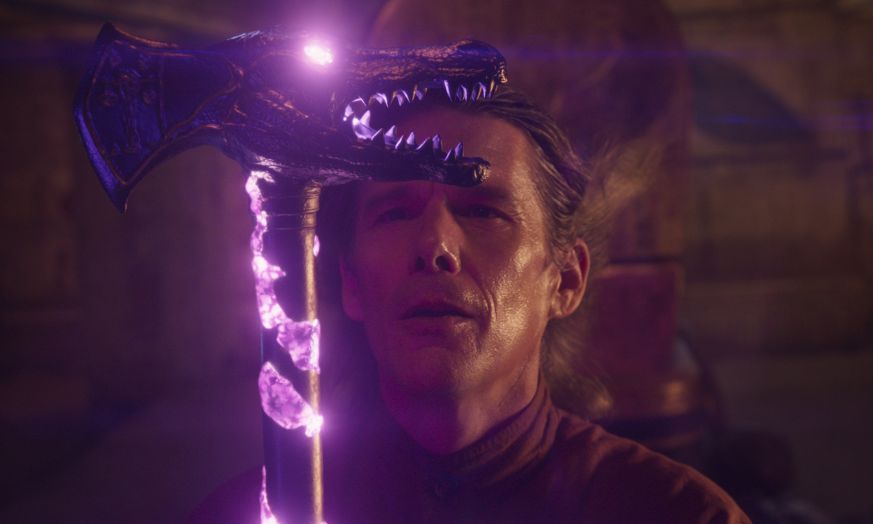
Case Study
On Moon Knight, Image Engine handled 197 shots, including the Staff of Ammit, digi-doubles of Moon Knight, and a massive CG environment build of Cairo in episodes 3 & 6.
View portfolio page Watch breakdown reelMarvel Studio’s new six-episode series follows Steven Grant, a mild-mannered gift-shop employee, who becomes plagued with blackouts and memories of another life. He discovers he has dissociative identity disorder and must navigate their complex identities while thrust into a deadly mystery among the powerful gods of Egypt.
Image Engine handled 197 shots on Moon Knight, including the Staff of Ammit, digi-doubles of Moon Knight, and a massive CG environment build of Cairo in episodes 3 & 6.
Image Engine’s VFX Supervisor, Thomas Schelesny, sat down for an interview to discuss the use of ftrack in the production of the Marvel TV series, Moon Knight. The article delves into the specific challenges and successes of creating visually stunning effects for the show, and how the team used the software to stay organized and connected throughout the project, allowing them to collaborate and review visual effects in real time.
Seeing double
Several of Image Engine’s shots involved the creation of Moon Knight and Mr Knight – the latter being the superhero’s Steven Grant incarnation. “Digital doubles were built of Mr Knight and Moon Knight,” explains Thomas Schelesny, Image Engine VFX Supervisor. “When filming most of Moon Knight’s stunt work, the actor wouldn’t wear a full costume, so we had to finish it off and add the digital cape. We also worked on the character’s glowing white eyes. If you look carefully in several shots, you’ll see the sclera is darker than the iris, which is an inversion of the normal look of an eye. This effect was required because there were times when the character’s head was looking one way but his eyes another, so we made his attention obvious in the composite.”
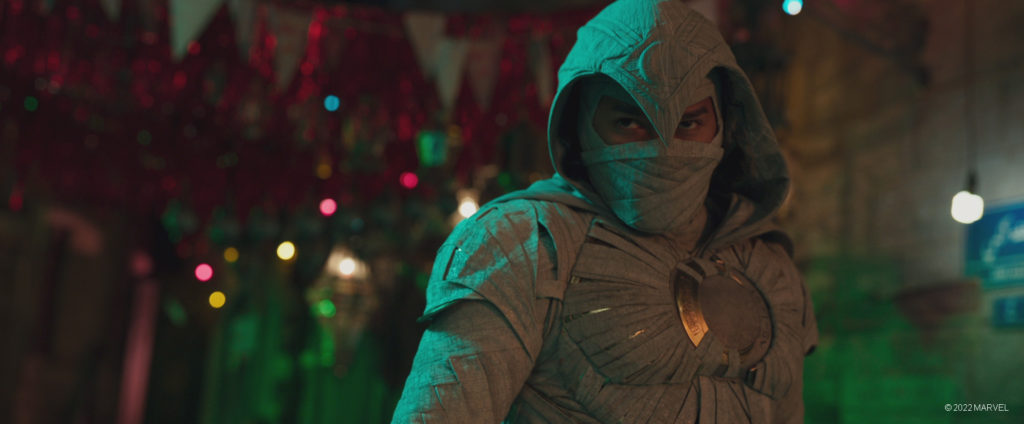
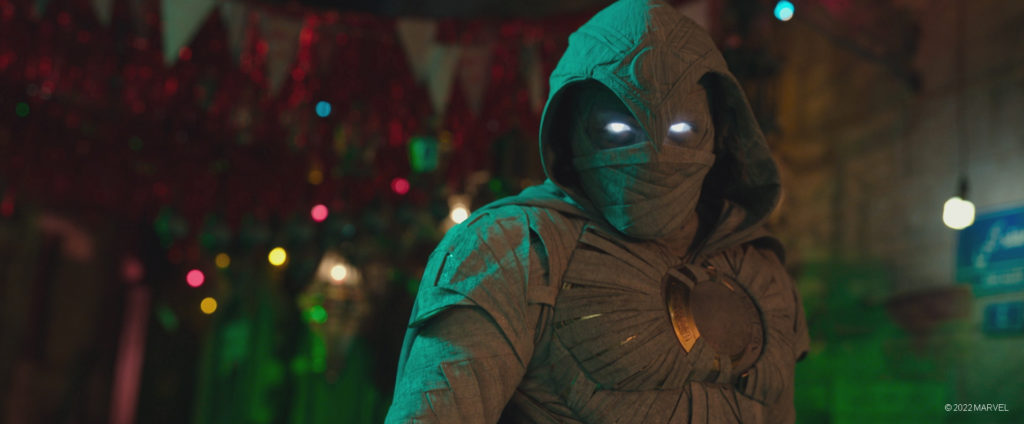
Creating Cairo
“You can’t shoot in Cairo,” explains Thomas Schelesny, Image Engine VFX Supervisor. “So, in one scene where Marc Spector is running on rooftops and gets into a knife fight with some bad guys, the only real element is the part of the set they’re standing on. The production shot it out in the parking lot with 360 degrees of greenscreen and a little parapet built around the shoot.”
Image Engine created everything else stretching beyond the actors. “We based our digital version of Cairo on a huge number of building photographs selected from Cairo, Budapest, and Jordan,” says Schelesny. “We placed geometry at a certain distance for buildings; beyond that, they were instanced. As a lot of these rooftops are used for storage, there are lots of details like piles of bricks, old bicycles, laundry, and air conditioners.
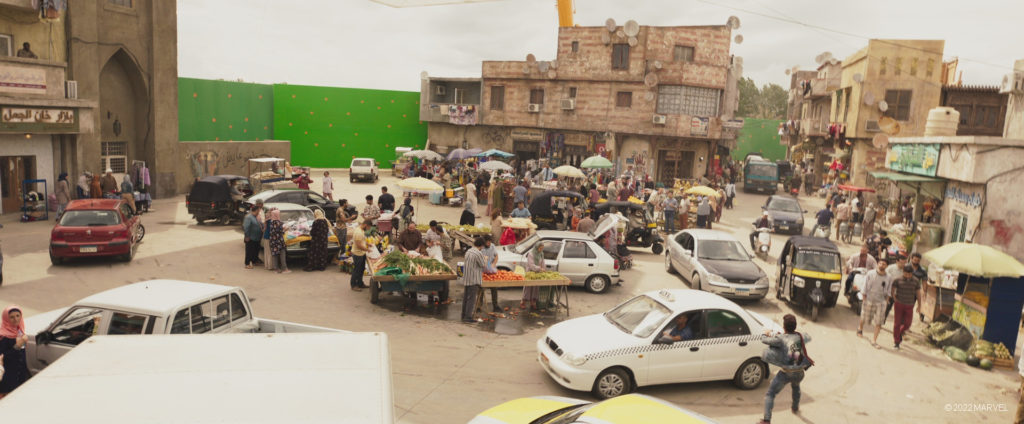
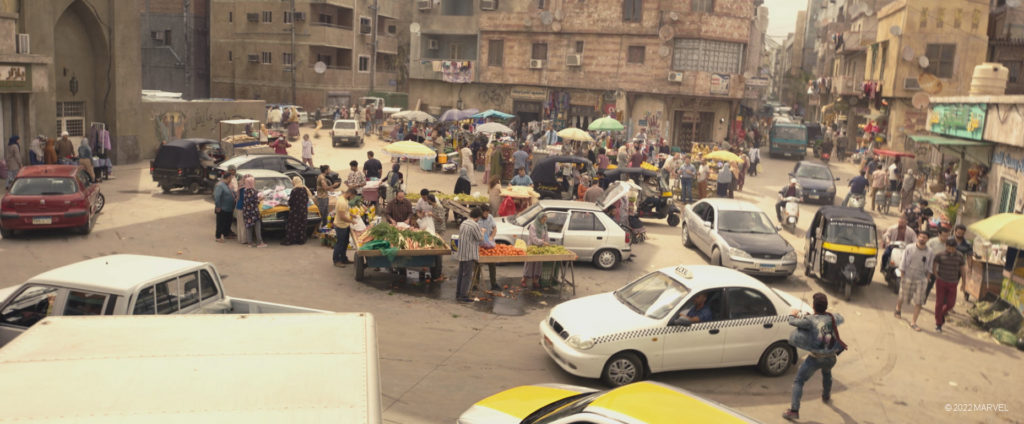

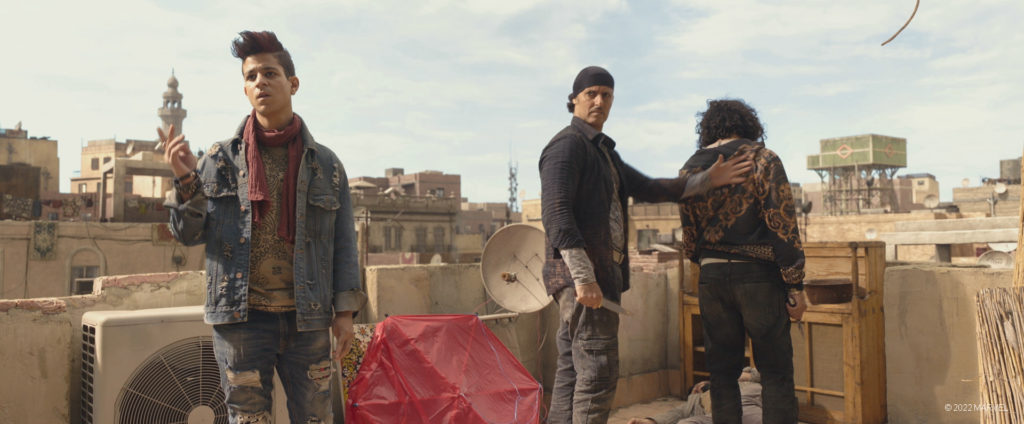
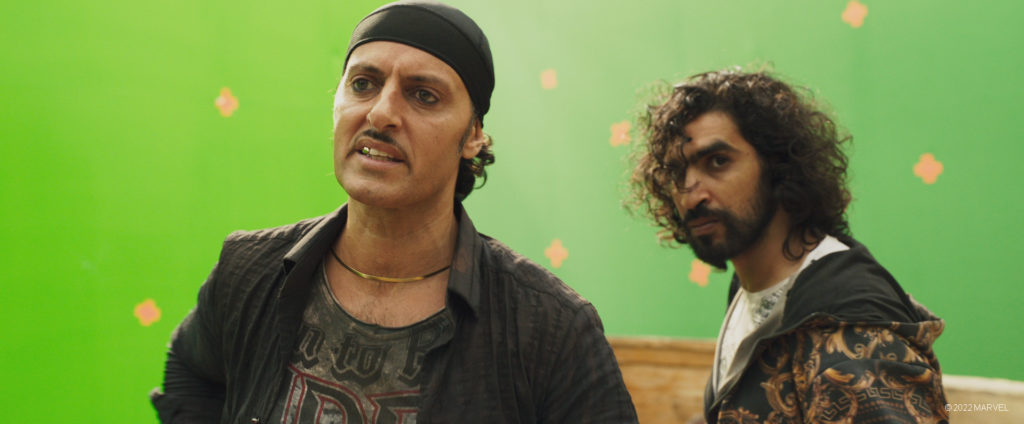
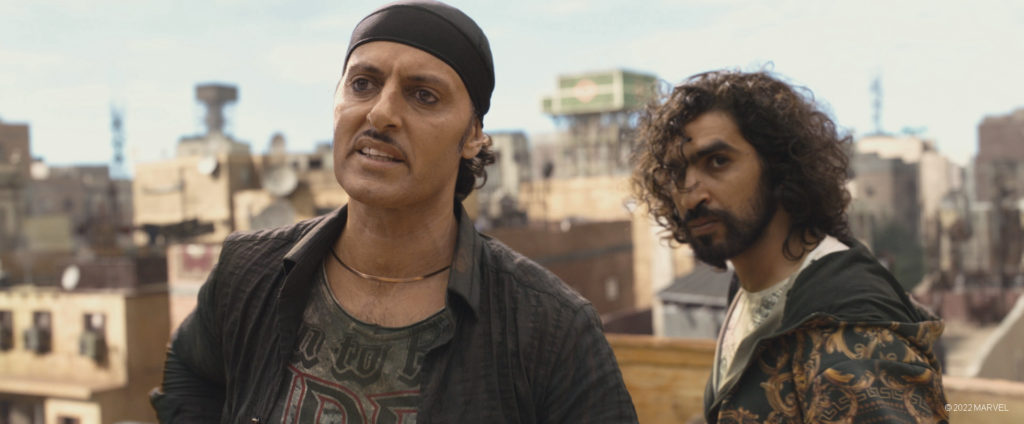
“I remember something didn’t look right when we initially laid out everything for the buildings,” he continues. “I asked our layout supervisor if he could select every building and give it a third of a degree to two degrees rotation in every direction, so nothing was ever square – suddenly it looked like Cairo! The team did an amazing job – during the rooftop chase, you can scarcely tell the difference between what’s part of the physical set and what’s a digital extension.”
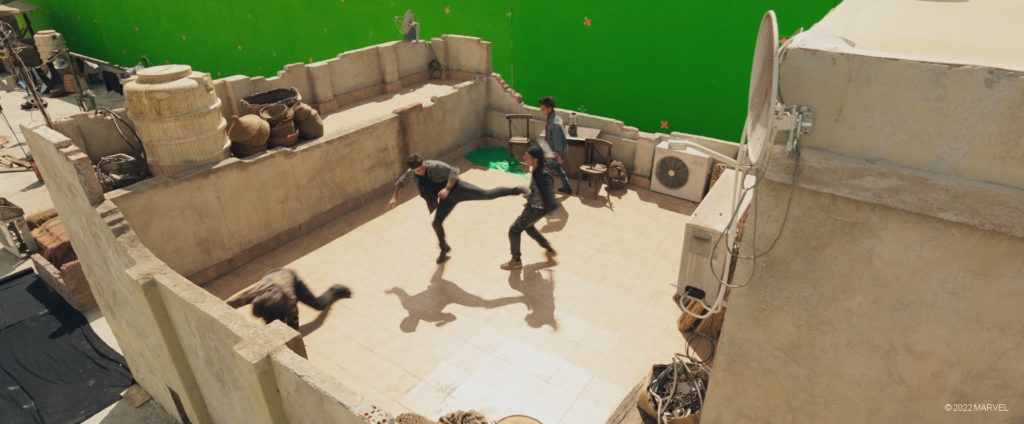
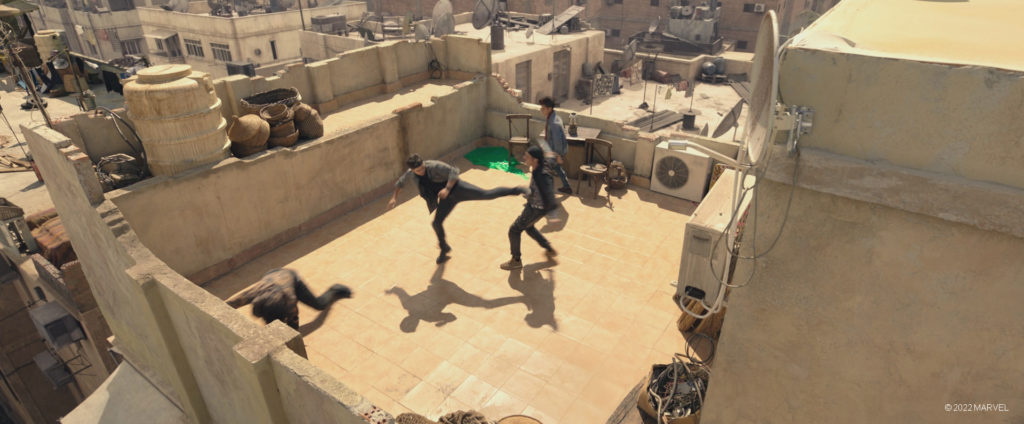

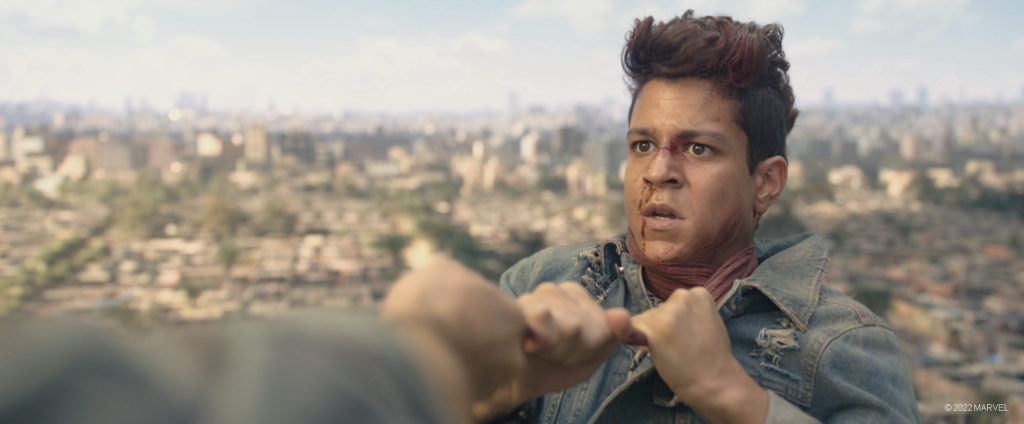
Once the rooftop fight concludes, Marc Spector captures and demands information from his one surviving assailant. “The two actors were standing on a 10x10ft set piece of a cliff’s edge, surrounded by greenscreen,” reveals Schelesny. “The drop was only four feet. Everything else you see in the background, including the old monastery, is digital.”
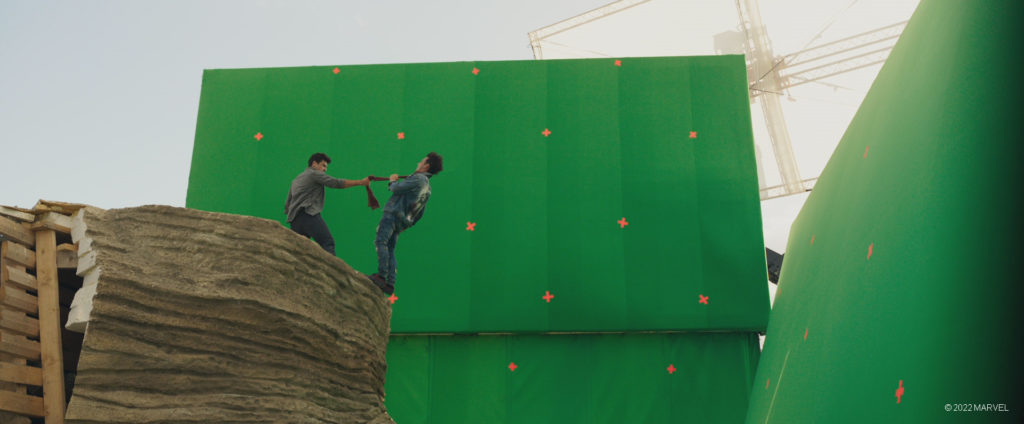
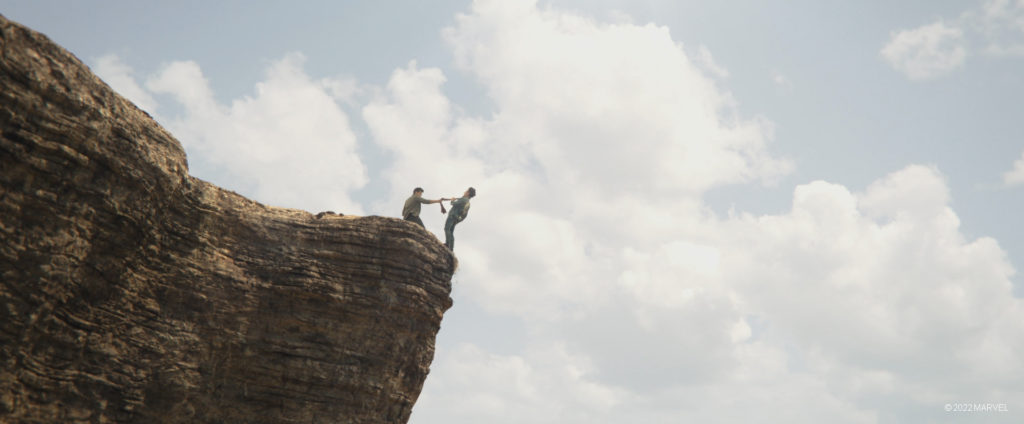
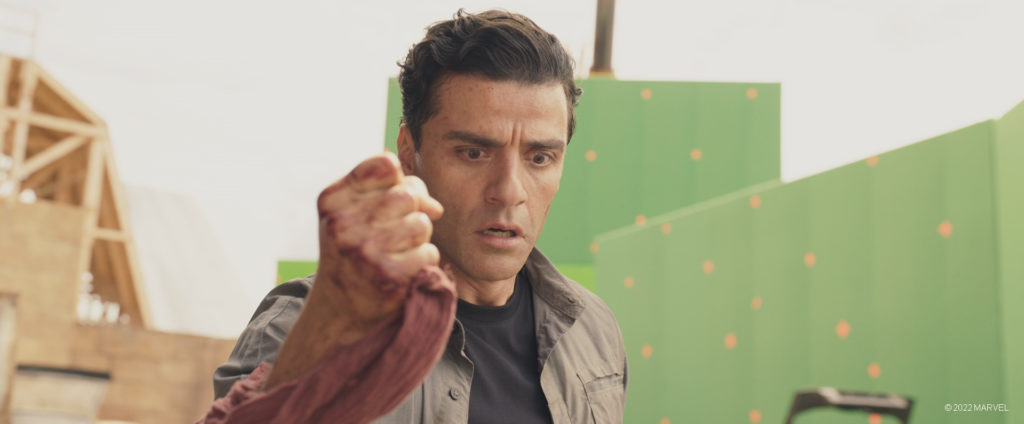
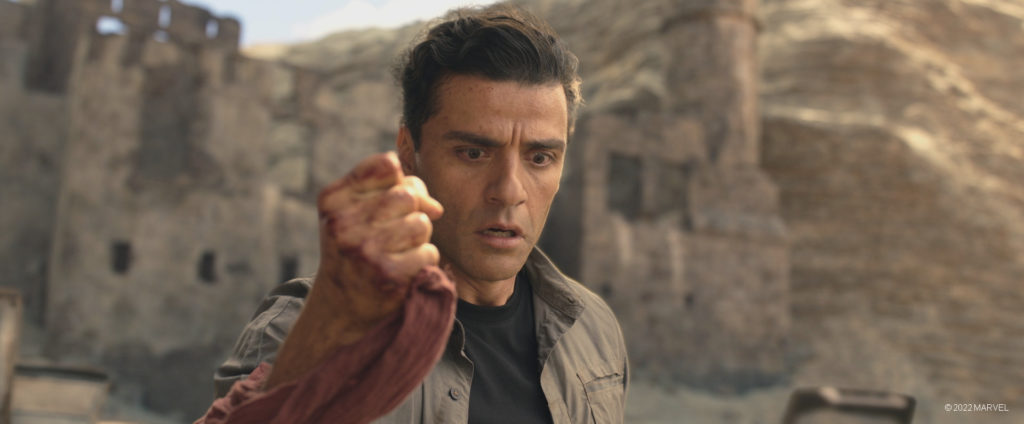

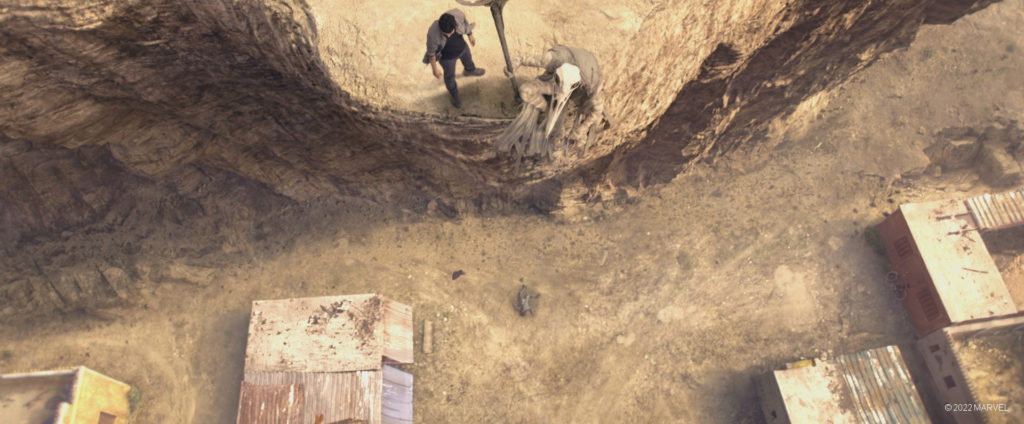
The Staff of Ammit
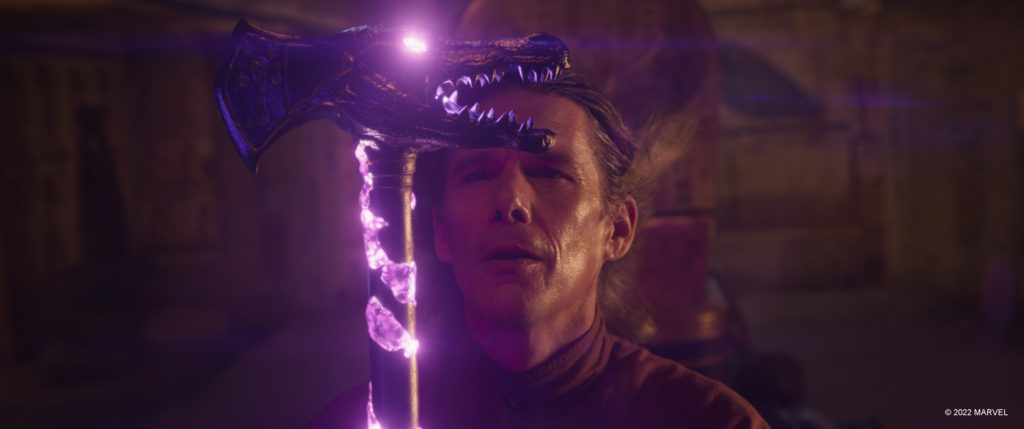
The antagonist in Moon Knight is one Arthur Harrow (Ethan Hawke) – Khonshu’s one-time avatar, but now a devoted follower of the Egyptian goddess Ammit. Using the Staff Of Ammit, Harrow exacts justice and judgment on others based on future crimes and extracts the souls of those deemed to be agents of evil. “The staff is seen many times in the show,” notes Schelesny. “Sometimes it’s just a staff, other times it glows with a luminescent, surrounding ribbon. In those latter cases, we would matchmove the staff, remove the practical staff, and add a digital topper.
“The hardest part was the staff transformation, which is when one of the staff’s dual heads flips over and becomes a single large head,” he continues. “To create this effect, the geometry had to fold inside itself. To achieve this, we wrapped all the geometry with additional geometry to make sense of the UVs. There was also a good chunk of internally-lit Houdini smoke rolling around the staff during the same effect. We worked hard on the smoke effect to ensure it exhibited continuity with smoke Weta FX created for another scene.”
